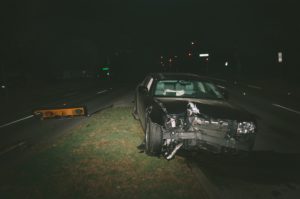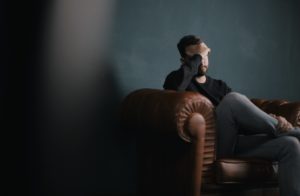When our clients add a teen driver to their auto policy, we share this article with them. It tells the story of Alex, a new teen driver, and his unfortunate fender bender on the way to visit his friend. Alex’s first thought after he was rear-ended at a stop sign is “What do I do now?”
We hope your teen drivers never have a car accident, but here are some tips to share with them about what to do in the event of a car accident.
1. Stay Calm
Immediately following an accident, you’ll be startled. The most important things to do are:
- Remain calm.
- Keep yourself and others safe.
If there are no injuries and your vehicle is driveable, in Indiana and Michigan it is legal to move the vehicle to a safe spot, not blocking traffic. Make sure you find out what the law is in your state regarding moving a car after an accident.
 2. Report the Incident
2. Report the Incident
If the accident was more serious (for instance, the airbags did inflate), you want to involve the police. After you check for injuries, call 911 or any other number your state uses to request emergency assistance on roadways. Be sure to keep track of these three questions when you report the incident.
Remember Who, What, and Where
- Who? Give the police your name and phone number.
- What? Tell dispatcher as much as you can about the accident. For instance, whether there is a fire, traffic hazard, medical emergency, etc.
- Where? Let them know where the accident took place.
3. Get Other Driver’s Information
Ask to see the driver’s license of the other drivers involved in the crash and take down their driver’s license numbers. In addition, be sure to get their name, address, phone number, insurance company, insurance policy number, and license plate number if possible.
4. Take Notes on the Accident
Take photos of the scene, including the vehicles, any damage, the roads, any traffic signs. Note the date, time, and weather conditions. If there were any witnesses, get their names and contact information.
Don’t Admit Fault: Even if you think you were at fault, you may not be. That’s why insurance companies advise you not to admit fault or accept blame for an accident.
 5. The Aftermath: Stress, Injury, and Other Concerns
5. The Aftermath: Stress, Injury, and Other Concerns
While the accident itself is upsetting, dealing with the aftermath can be too. If the crash was very serious, you may experience extreme stress for weeks or months after the trauma also known as post-traumatic stress disorder (PTSD). Not everyone does, but here are some of the symptoms to look to be aware for:
- avoiding emotions or any reminders of the incident
- constant feelings of anxiousness, crankiness, or anger
- avoiding medical tests or procedures
- constantly reliving the incident in one’s mind
- nightmares or trouble sleeping
If you notice any of these symptoms after you have been in a car accident, try talking through the experience with friends or relatives you trust. Discuss what happened, and what you thought, felt, and did days after the collision. If you find you cannot get back into your everyday activities or you are still having these symptoms, ask your parent or guardian to help you check in with your doctor.
6. Other Road Problems
Car accidents are not the only incidents that drivers experience. Blowouts and breakdowns can happen to any driver. too.
7. Flat Tires
If you find yourself in a blowout situation, here are a few suggestions from AAA:
- Don’t panic and stay off the brake because it could cause a skid.
- Set up your breakdown site. Once safely off the road, put on your hazard lights.
- Get help if you need it. Call an automobile club or auto repair garage if you need assistance with the flat tire.
- Don’t walk in or near traffic.
- If you change the tire yourself, take your car to the shop so a mechanic can look it over for any damage.
8. Breakdowns
If your vehicle breaks down, safely steer off the road and bring it to a stop. Make sure you put on your hazard lights and call for roadside assistance. A major difference between flat tires and breakdowns is it’s less likely you will be able to fix a car that has broken down. Wait inside the car for assistance with the doors locked. Only walk if you can see help nearby, and stay as far away from traffic as possible.
Have questions about insuring your new teen driver? Contact Us. We have the answers.
About the Authors

Connie Greenwood, Risk Management Advisor
Connie Greenwood has 35 years of experience as an Insurance Advisor. She enjoys helping her clients and prospects understand their insurance options, and crafting insurance solutions tailored to their unique needs. Connie finds great joy in being a trusted advisor for her clients. She loves helping protect their financial welfare against unforeseen accidents and circumstances and bringing them peace of mind.

Tim Pingel, Risk Management Advisor
Tim Pingel has almost 20 years of experience as a personal insurance adviser. He provides individuals, couples, and families with home, auto, and umbrella insurance. His ultimate goal is to be his clients’ trusted adviser and expert, so they have the peace of mind and protection they deserve.


Recent Comments